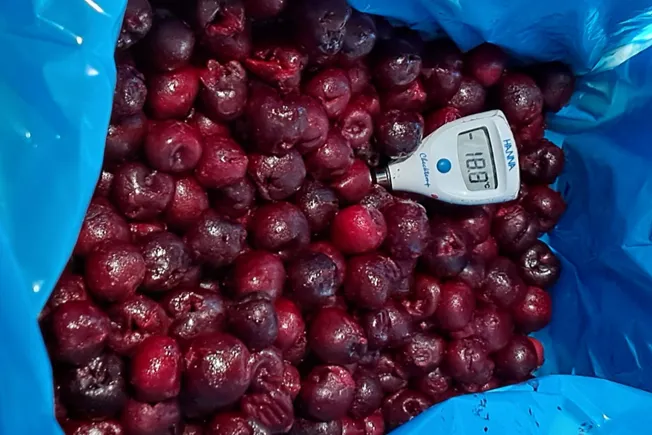The increase in cherry production in Chile, with a growth of over 50%, is pushing the industry to consider strategies to manage the excess supply.
Among the emerging options, in addition to expanding into new markets, the transformation of fresh fruit into frozen cherries stands out, a niche segment that is experiencing strong growth.
To explore the topic further, we spoke with Gonzalo Bachelet, CEO of Vitafoods and president of ChileAlimentos.
According to Bachelet, although the frozen cherry market is still marginal compared to fresh fruit, the volume exported grows year after year.
A Growing Market
Historically, Chile has mainly exported frozen berries, such as raspberries and, more recently, blueberries.
Cherries are a new addition to this sector and are selected from fruits that have reached full ripeness but are not suitable for the long journeys required for fresh export.
"The process is different from that of other berries," explains Bachelet.
"Initially, only discarded fruits from the fresh market selection were used, but now industry companies have started investing in specific processing lines for cherries, equipped with systems for pit and stem removal."
Investments and Processing
The frozen cherry processing involves several stages:
- Stem removal;
- Selection and pitting;
- Washing and freezing;
- Quality control using advanced systems, including X-rays, to eliminate any impurities.
"The final product is excellent: ripe and flavorful cherries, perfect for direct consumption or the food industry," says Bachelet.
However, frozen cherry prices are significantly lower compared to fresh cherries.
Despite this, they represent an opportunity to maximize the value of the entire harvest, reducing waste.
Where Are Frozen Cherries Sold?
The United States remains the leading producer and consumer of frozen cherries, followed by Europe and, more recently, Turkey.
China has also entered this market, although sales in early 2025 showed a slight decline.
The main uses of frozen cherries include the production of cherry pies and their sale in mixes with other fruits, such as cherry mix and berry cherry mix packages.
Growing Numbers

The growth trend of Chilean frozen cherry exports is evident: in the first two months of 2025, volumes doubled from 2,000 to 4,500 tons.
Forecasts for the entire year suggest a potential doubling compared to 2024, with exports possibly reaching 19,000 tons.
"Our goal is to expand target markets to support this growth," Bachelet explains.
"We already have a quality product; now we need to introduce it to consumers."
A New Perspective for Chilean Producers
Until last year, the frozen industry was considered a secondary solution for fruit that could not be sold fresh.
However, with the decline in fresh fruit prices, freezing cherries is becoming an increasingly attractive strategy to ensure the economic sustainability of producers.
Today, the price of frozen cherries is around 50 cents per kilo (approximately €0.46).
The most suitable varieties for this process are those with dark flesh.
With growing demand and targeted investments, the frozen cherry sector could soon become a key component of Chilean fruit exports.
Text and images: portalfruticola.com
Cherry Times - All rights reserved













